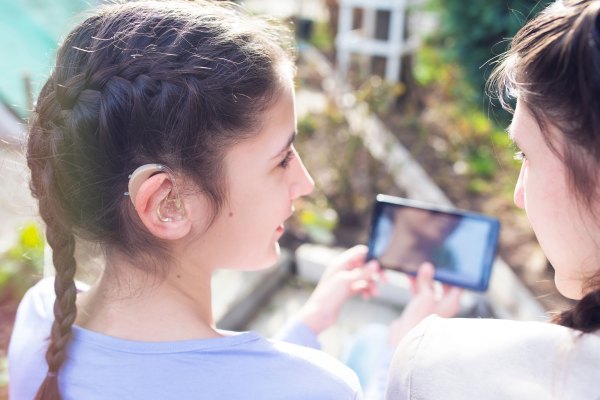Denmark’s GN Hearing broke new ground in hearing aid technology five years ago when it inked a deal with Apple to develop a hearing aid that would integrate seamlessly with an iPhone, with no need for an intermediary device. And today it announced a significant, new milestone expansion in that technology: it has partnered with Google to bring the same functionality to Android handsets.
Google has published a specification for audio streaming for hearing aids using Bluetooth Low Energy (BLE) and connection-oriented channels which, in the words of Google, relies on “an elastic buffer of several audio packets to maintain a steady flow of audio, even in the presence of packet loss. This buffer provides audio quality for hearing aid devices at the expense of latency.” GN Hearing will be the first to develop these hearing aids using Google’s specifications, which it helped to write.
“Google is working with GN Hearing to create a new open specification for hearing aid streaming support on future versions of Android devices,” said Seang Chau, Vice President of Engineering at Google, in a statement.
This will mark the first time that Android smartphones will stream audio directly to hearing aids, and, since Android devices account for a majority of smartphones in use today, it is a big step up in helping people who use hearing aids be more integrated with the “smartphone revolution” and the wave of services and applications that come with using mobile devices.
Up to now, because of how hearing aids are designed to amplify sounds, those who used one, and also wanted to use an Android device, would either have to use a supplementary piece of hardware to use the two together, or remove the hearing aid altogether and have a poor quality conversation.
In addition to using the specification to stream audio from calls and phone apps directly to the hearing aid, users will also be able to monitor their hearing aids and modify their volumes using an app on their phones.
Anders Hedegaard, the CEO of GN Hearing, tells TechCrunch that he “cautiously” estimates that the first hearing aids with live Android integrations will hit the market in 2019. And while his company does not have exclusivity on this — and the specification, like others on Android, is open source for anyone else to use — GN Hearing is likely to be the first because it has been working on the specification.
Hearing loss has been on the rise, in part because people are living longer, and in part because of environmental factors (like headphones that people use with loud volumes). The World Health Organization estimates that there are some 466 million people with disabling hearing loss, up from about 360 million in 2013, and that will grow to 900 million by 2050.
But despite the growth of the issue, both the hearing aid industry and its users have been relatively slow to embrace wireless technology, although things have been changing. Hedegaard said that when his company first announced its partnership with Apple in 2013, the idea of a connected hearing aid was relatively new, and it took until 2016 for any one of its competitors to add the iPhone integration that GN Hearing pioneered. “Today, data connectivity is a core part of hearing aids,” he said, “and 90% of our devices have it.”
Similarly, the amount of hearing aid users actually employing the connected functionality is also going up.
“We have seen the percentage of people using connectivity going up dramatically,” he said. In 2013/14, he estimated that only about 10 percent of people who had connected hearing aids actually used the service with apps and other devices. Now “the majority” download apps and take advantage, he said. It helps that with each year, the gap between the ageing population and those who have spent years using computers and mobile phones and apps is shrinking. “Time is going our way,” he said.
